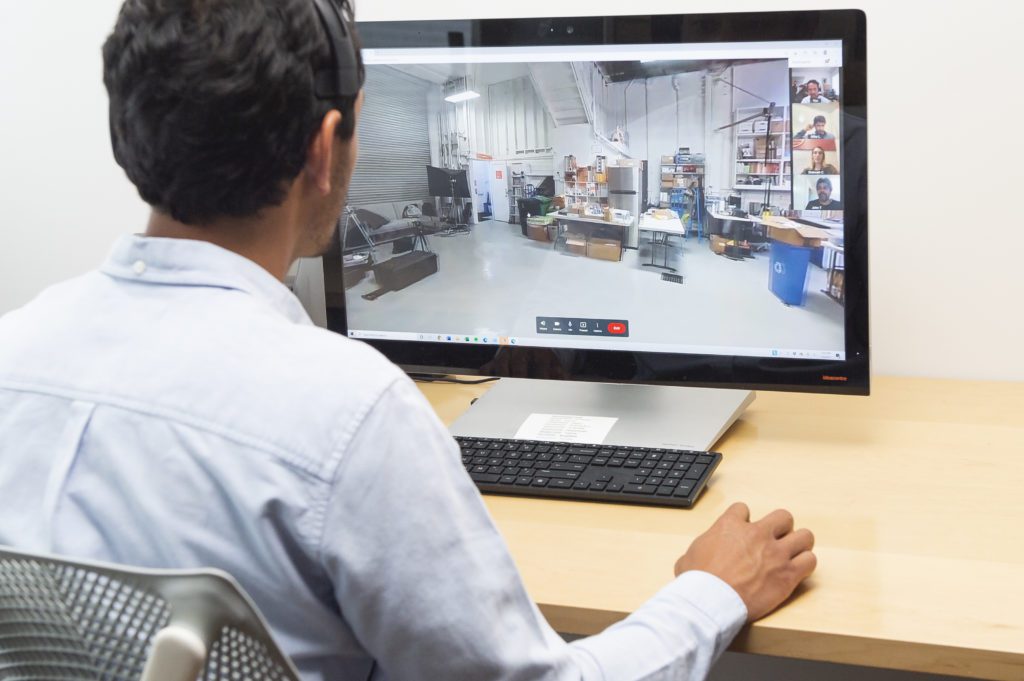Governments, businesses, and individuals must reduce their carbon emissions to avoid devastating climate effects. One solution, that is both immediate and effective, is for businesses to substitute routine travel with remote collaboration platforms. Tools like Avatour’s 360° platform help companies drastically reduce their carbon footprint without sacrificing quality. Let’s find out more about business travel’s environmental impact and emissions and the ways to resolve these problems.

The Prevalence of Business Travel
Travel is a significant part of the global corporate culture. There are over 463 million business trips in the United States each year.
Business travel exists for a variety of reasons. Some business trips are less of a necessity and more of a professional courtesy, to meet remote teams, entertain potential customers, etc… However, some business travel is essential, especially site-specific trips such as inspections, audits, training, or physical tours.
The nature of these meetings is less about the face-to-face meet and greet and more about gaining a thorough understanding of a physical environment. For example, a small audit team may conduct up to eight audits per month through a mix of national and international travel. The pharmaceutical, AEC (architecture, engineering, and construction), and manufacturing industries in particular often rely on site-specific audits, safety assessments, and facility tours to keep business running smoothly.
It is expected that while the pandemic slowed business travel, it will return to about 80% of its previous levels.

The Environmental Impact of Business Travel
With hundreds of millions of trips per year, business travel takes an enormous toll on the environment. To put things in perspective, a single passenger airplane can produce 90kg of CO2 per hour versus the average car which produces 0.7kg of CO2 per hour.
In the United States and Europe, it is common to take short business trips quite frequently. But commercial airlines flying relatively small distances emit an alarming amount of carbon. For example, a short return trip from London to Rome carries a carbon footprint of 234kg per passenger. This single trip is more than the average footprint of 17 counties annually.
According to a 2018 study, “if the global aviation industry were a country in the national CO2 emissions standings, the industry would rank number six in the world between Japan and Germany.” As this study was from 2018, we can only expect this number to climb. In fact, given the projected growth of passenger air travel, commercial aircraft emissions could triple by 2050.
Carbon emissions make up about 70% of aircraft emissions. But air travel also releases other harmful greenhouse gasses, such as contrails, soot, and nitrous oxide that are capable of trapping heat in our atmosphere.
Innovation & Necessity to Reduce Carbon Emissions
We are at a pivotal point in the fight against climate change as countries around the world have begun feeling its adverse effects. The entire planet has a responsibility to create a better future for our children and generations to come, but we must make drastic changes now. In order to prevent climate change, the average person’s carbon footprint must decline by two to four tons annually. To put things in perspective, one long-haul return trip could account for 50-90% of a person’s ideal annual carbon footprint.
While the world has a long way to go, governments are attempting to curb their emissions through carbon reduction targets. There are currently 1800 laws worldwide controlling CO2 emissions. Additionally, Europe recently set an ambitious goal to reduce carbon emissions by 55% by the end of this decade.

The Solution: 360° Remote Collaboration
Airlines are conscious of sustainability initiatives, but there is currently no viable way to decarbonize flying anytime soon.
Therefore, cutting back on business travel is the primary choice to reducing carbon emissions in this area. With the profound environmental impacts of travel, cutting back on travel by even half would go a long way.
Until now, most businesses were hesitant to cut back on travel, fearing that alternatives like standard videoconferencing would be poor substitutes for site-specific meetings such as training, audits, and tours.
Avatour’s 360° video collaboration platform provides a live experience of a real place in real time. Using advanced 360° technology, Avatour provides a full context of a given space, so visitors have a remarkable sense of being present with the freedom to choose their own point of view.
The pandemic provided an opportunity for businesses to adjust to a world without travel, giving way for the widespread adoption of remote platforms like Avatour. Avatour is the first real-time 360° platform of its kind. Many businesses that conduct regular on-site meetings turned to Avatour during COVID lockdowns to keep businesses afloat. However, many are seeing benefits that last far beyond the pandemic, including time-saving, cost-saving, and carbon reduction value.
There’s still time to create a better future. Businesses that prioritize carbon reduction targets will not only contribute to a greener planet but also pave the way for increased innovation in their organization.
Check out also, how to reduce travel costs in a business.
Interested in Avatour?
Learn more about how Avatour works or click here to book a personalized demo.
